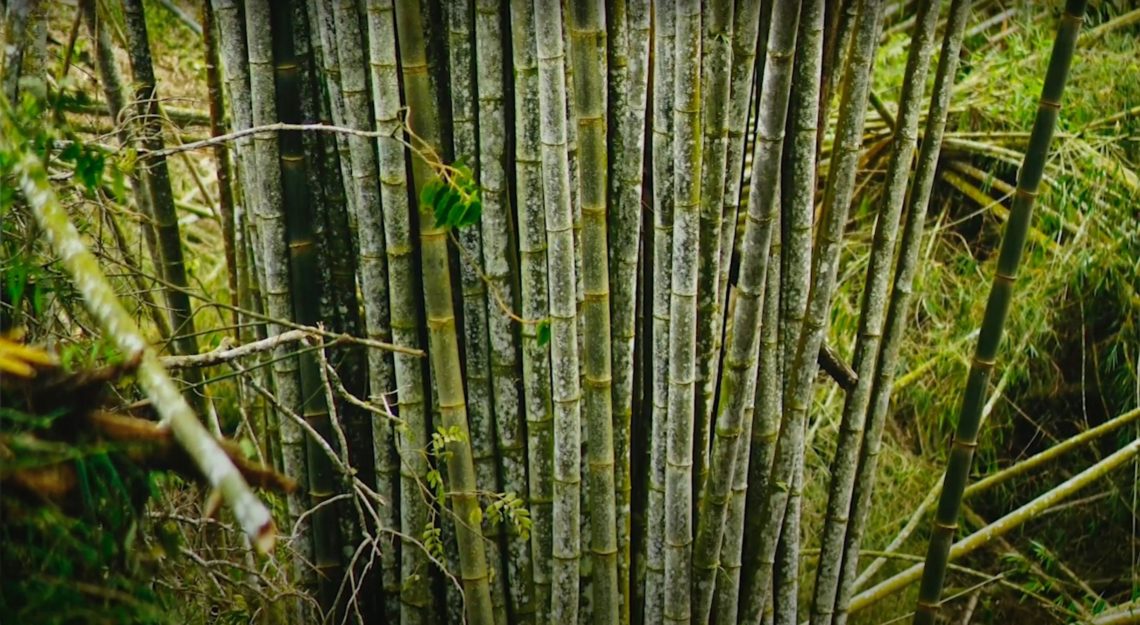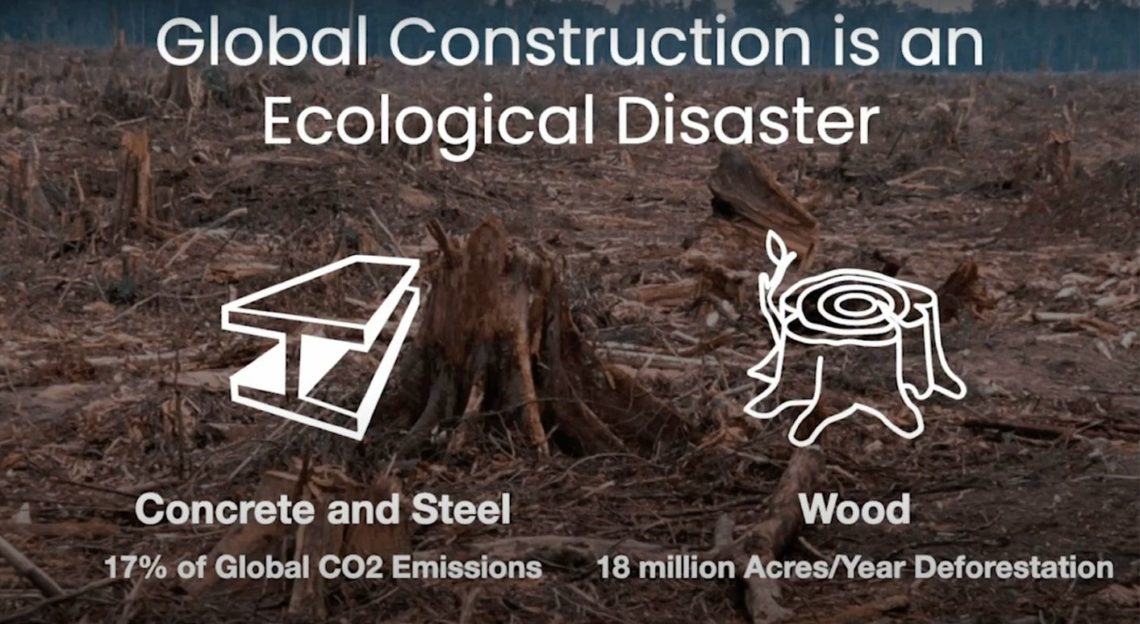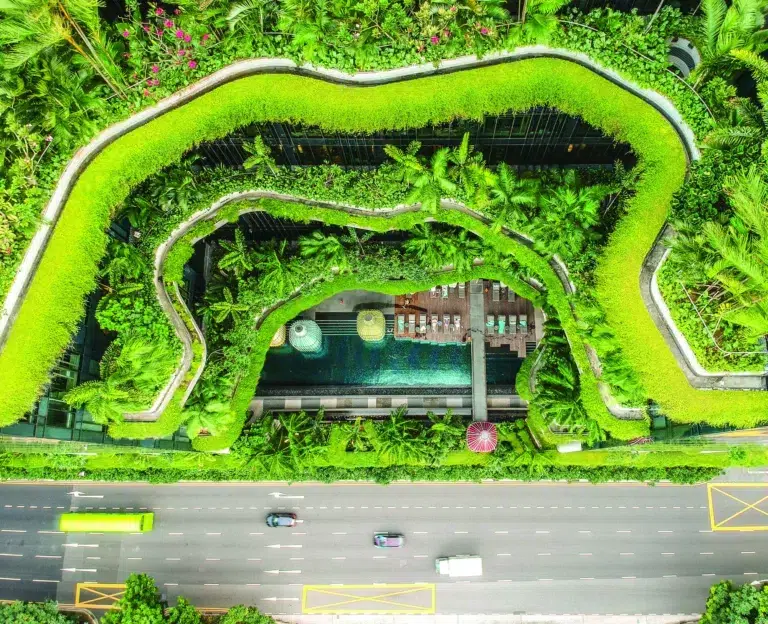Bamboo, a viable construction material for a sustainable future
This article is based on the Engineering Case Study at the PropertyGuru Asia Real Estate Summit originally presented on 3 December 2020.
Troy Carter of Rizome, winner of the 2020 Tech Innovation Award at the PropertyGuru Asia Real Estate Summit, shares his team’s climate-positive alternative to steel and concrete, both environmentally harmful materials

We currently live in a digital era with cities growing at rapid speeds, particularly in low-income countries like Asia and Africa. According to the Overseas Development Institute, two-thirds of the predicted world population or about 6.5 billion people will reside in urban centres by 2050.
It is widely accepted, without doubt, that urbanisation has changed and lifted living standards of many residents by producing more jobs, higher per capita incomes, innovation opportunities, and more.
However, urban living, especially growing at a high-speed, comes with consequences to the environment and the world that we inhabit.
As much as we love urbanisation and the comfort that comes with it, our world is suffering from that same process that is making our lives easier and more convenient.
The reality of urban living
As reported by World Wildlife Fund, forests cover 31 percent of our planet’s land, purifying air and water, providing people with jobs, and most importantly, a home to most of the world’s biodiversity.
But forest degradation and deforestation from agriculture, illegal logging, and construction are jeopardising these benefits.
Consequently, we are living in a world with reduced biodiversity, increased greenhouse gas emissions, disrupted water cycles, increased soil erosions, and more.
The rate of construction across the globe would eventually lead to an ecological disaster, with concrete and steel producing 17 percent of global CO2 emissions and wood harvested unsustainably all around the world causing further deforestation.
Data from ResearchGate indicate that countries with the highest deforestation rates in the world include Brazil, Indonesia, the Philippines, and those in Sub-Saharan Africa. All these nations have fast-growing populations and cities, meaning that more buildings will be constructed out of concrete and steel unless there is a viable construction material alternative.

It’s not too late
What if there was a viable alternative that could be the answer we were looking for?
To many people, the first thing that pops into their mind when they hear bamboo is pandas. This plant is well-known to be eaten by one of the world’s cutest, fuzziest animals. But little did we know that bamboo is hypothesised to be one of the only viable construction materials that can grow in a climate-positive, built-in environment.
Troy Carter, the co-founder and chief strategy officer at Rizome, shared his company’s ambition in pioneering the use of engineered bamboo lumber as a climate-positive alternative to wood, steel, and concrete at the PropertyGuru Asia Real Estate Summit 2020.
Bamboo is not only the fastest growing plant on land, it is also the fastest carbon sequestration technology on earth. “It sequesters carbon dioxide from the atmosphere, puts it into biomass, into soil, and we harvest it and put it into the built-in environment,” explained Troy.
Bamboo is incredibly regenerative and consumes 12 times less land than wood, which means that the same amount of building material can be harvested on less than 10 percent of the land, reducing the level of trade-off between building more and reserving native forest.
The plant is also 2.5 times the strength and weight compared to steel, making it an incredible alternative. On top of that, bamboo is fire resistant. In the past, large skyscrapers have never been built with wood for this very reason. Bamboo is the only Class-A fire rating of any biological product out there, so with this material, developers would be able to design huge, exposed beams that won’t burn.
Engineering our future
Rizome is currently most active in the Philippines and the lumber is nearly all exported to the US and production has been growing significantly. In a couple of years, the company expects to be shipping globally, while also planting forests all around equatorial regions.
In producing engineered bamboo lumber, Rizome will first source these from local farmers who supply large poles of bamboo. Following is the “process” (split, plane, treat, and dry slats), which turns the poles into stable and long dimensions. The bamboo is then glued together to form any type of configuration.
Price is one of the thresholds that bamboo must overcome in order to be globally relevant. Most buildings are built on the fastest, cheaper, and highest quality materials.
“We anticipate bamboo to reach price parity with wood in 2021. For most structural applications, it’s already cheaper for hardwood replacements like maple or oak, and it looks gorgeous for wall panelling, windows, etc.,” said Troy.
Rizome is currently in its pilot phase, building their third factory in the Philippines. Bamboo has been an academic material so far, and for the first time in history, the company is turning it into a commodity product.
More designers and engineers are going to discover ways to build buildings that take advantage of the sophisticated mechanical characteristics of bamboo.
Rizome’s carbon sequestration goals
Bamboo hasn’t yet been developed into a sophisticated supply chain unlike wood as it mostly grows in equatorial regions. In order to develop a rigorous supply chain, an abundance of bamboo needs to be planted, including advanced manufacturing capacity and the creation of sales channels.
Rizome is on a mission to draw down CO2 from the atmosphere, as we are experiencing a climate crisis. Plants are the best technology humans have in absorbing CO2, despite all the new technological advancements that have been developed.
Troy shared that their internal goal is “to draw down 10 gigatons of carbon or 10 billion tons of CO2 by 2050, which means planting more than a million hectares.”
In order to achieve this goal, countries undergoing high rates of deforestation will need to come forth and restore local ecology.
Non-invasive species of bamboo are incredibly easy to plant as it’s robust plant that will remain in one area and brings about great ecological benefits such as soil erosion control, nutrient regeneration, and CO2 absorption.
Most importantly, bamboo serves as an economic interest for local people. Other wood forests won’t generate revenue for local people for 40 to 50 years, but with bamboo, residents will quickly see a turn on their land, preventing them from cutting land for agricultural use.
Looking into the future

As of 2020, there still isn’t a sustainability initiative that accurately evaluates whether bamboo is sustainable so Rizome has been using internal verification to analyse the plant.
Despite how sustainable the material is, price and scaling are still the biggest hurdles to overcome, and it will take a few years for bamboo to be widely available for use.
Collocating plantation and shipping is a method for access to this new alternative, but at the end of the day, countries will need to be able to produce their own engineered bamboo lumber.
Ways to approach carbon has changed notably over the years. We see more and more companies like Amazon and Microsoft leading the way with carbon offsetting, but such initiatives aren’t physically removing CO2 from the atmosphere.
Troy believes that the most holistic way in addressing climate change is using the available nature-based carbon removals that also have a useful end-product.
There are numerous steps that the property and construction sectors can do to fight climate change.
“We can reduce at least 90 percent of building operational and energy costs by doing better installation and renewable energy,” he said.
However, that still leaves about half of the energy in a building unaccounted for, indicating the need to change the building materials we’re using.
“Building with wood is an awesome technology. It’s approximately carbon neutral, but more recent data shows that forestry is actually not as sustainable as we may want it to be. It basically has a long-term detrimental impact to forest health and growth rates.
What we suggest instead is using bamboo where you can cut a third of clumps every year, so it’s essentially a very efficient machine for taking CO2 from the atmosphere, putting it into a plant, and the plant turns into a building material,” he concluded.
The original version of this article appeared in Volume 1 of the PropertyGuru Asia Real Estate Summit (ARES) Digital White Paper. Write to our editors at [email protected].
Recommended
6 green real estate projects reshaping Asia’s future
Developers are being incentivised to push a green agenda into daring new realms
ARES White Paper Volume 3: The era of adaptive reinvention
Pioneering sustainable and innovative practices in urban development
ARES White Paper Volume 2: Unravelling the power of data revolution in real estate
Insights on proptech, smart cities, and sustainable development
ARES Digital White Paper Volume 1: The fundamentals of responsible building
Green and climate heroes join forces to discuss how Asia Pacific can weather the current environmental crises and the looming effects of climate change






